A Deep Dive Into The Opioid Crisis
Authored by Matt Bivens, M.D. via Racket News,
Editor’s note: the following is the first essay in a series, written by former Moscow Times co-worker and current E.R. doctor Matt Bivens. The remaining features will be published serially on his Substack site, The 100 Days. None of the articles in the series will be paywalled. In a normal presidential election year, the opiate addiction crisis would be a front-and-center domestic issue, but for a variety of mostly illegitimate reasons, it flies somewhat under the radar. Matt’s series chronicles the surprising and little-understood reasons contributing to this man-made, rapidly worsening disaster.
Yes, we in the medical profession got millions of Americans addicted to heroin and fentanyl. But that was all just a big misunderstanding. Why get into it?

And sure, nearly one in ten adults has had a family member die from a drug overdose. Ordinary people are furious about it, too. Their under-appreciated rage drove skepticism of official COVID-19 narratives, and that same rage might sway the outcome of the Presidential election — heck, might even land us in a war with Mexico! (Wouldn’t that be the ultimate “Wag the Dog”-level distraction from those sociopaths upstairs in our House of Medicine!)
So, yes, agreed. All good points.
We medical people who see the patients and do all of the work — we, the house staff — we’re downstairs people. We can’t do anything about what goes on above. Agreed, it’s shameful how easily the upstairs sociopaths conned us, and it’s annoying to see them now so fabulously rich. But doctors being intentionally manipulated into destroying the lives of millions — that could have happened to anyone. Why stay angry about it? Ancient history! It’s not like it’s still happening, right? (Right?)
Surely you don’t want to burn down the entire house? We work here. And the pay is not bad. Let’s just focus on the patients before us, and try to stay positive. Right?
Heroin™ — brought to you by Bayer!
As a medical student, I was once told by my attending physician that people treated with morphine for pain don’t get addicted.
Surprised, I asked, “But what about all the Civil War veterans?”
When the U.S. Civil War ended in 1865, both sides demobilized a weary horde of chronically ill and wounded. Some soldiers had contracted tuberculosis, or a lingering pneumonia (in the days before antibiotics). Others had suffered field amputations with handheld saws. But whether the question was chronic coughing or terrible pain, the answer was morphine. The newly invented hypodermic needle allowed for fast-acting injections. Veterans everywhere got hooked, to the point where addiction was called “the Soldier’s Disease.” Soon morphine moved beyond the battlefield and was in use for everything from menstrual cramps to teething.
 Vintage ad for a morphine-based child’s medicine. From the DEA’s online museum.
Vintage ad for a morphine-based child’s medicine. From the DEA’s online museum.
Things got so bad that when heroin (diacetylmorphine) arrived, it was welcomed as an improvement. Chemists had discovered it decades earlier, but in 1898 the pharmaceutical company Bayer started selling it as Heroisch, German for “heroic.”
Heroin was a trade name. It was Heroin™ — brought to you by Bayer!
Doctors desperate for something safer than morphine often convinced themselves this new drug wasn’t addictive.
“Heroin… possesses many advantages over morphine,” wrote a physician in 1900, in the precursor to the New England Journal of Medicine. “It is not a hypnotic… [and there is no] danger of acquiring the habit.” The philanthropic St. James Society even mounted a campaign to mail free heroin samples to morphine addicts (!), to help them break the habit.

Other doctors saw the public swilling down heroin and berated their fellow physicians for not sounding the alarm.
“The patient comes to look on heroin as a harmless sedative for his cough,” wrote one such physician in 1912, in the Journal of the American Medical Association, because too many doctors think it’s safe:
“A patient who came under my observation told a physician, who was called to treat him for an attack of laryngitis, not to give him anything that contained opium, because he had formerly been a slave to this drug. The physician replied: ‘I will give you some heroin; there is no danger of habit from that’.”
Ordinary Americans weren’t buying it, and by 1906 we had established the federal Food & Drug Administration, because moms want to know if it’s got heroin. Cure-alls like the morphine-and-alcohol-based Mrs. Winslow’s Soothing Syrup definitely did quiet fussy babies, but it’s believed thousands never woke up again.
President Teddy Roosevelt appointed an “Opium Commissioner,” who looked around and saw track marks on the arms of everyone from aging Army of the Potomac vets to high society ladies, and declared, “Americans have become the greatest drug fiends in the world.” It was our first Opioid Crisis. It had been driven by genuine ignorance and a lack of good alternatives — but tellingly, also by the inappropriate use of heavily marketed and physician-endorsed treatments. In response, the nation went on a scorched-earth campaign against all addictive substances, starting with new anti-narcotics agencies staffed by G-men in trench coats, and culminating in the U.S. Constitutional amendment to ban alcohol. Again: We rewrote the Constitution to outlaw alcohol. That we once went so far suggests how bad things had gotten.
This all seems like a glaringly obvious cautionary tale for the House of Medicine. Yet somehow, not 70 years after the nation had walked away from the Prohibition experiment, medical schools — medical schools! — were abruptly teaching that opioids weren’t necessarily addictive.
When my attending said a patient wouldn’t get addicted if a doctor gave morphine for pain, he was simply channeling what all the best people were saying. For example, in 2000, the Joint Commission — an independent non-profit that sets accreditation standards for hospitals — published a book for physician education that claimed:
There is no evidence that addiction is a significant issue when persons are given opioids for pain control.
No evidence. And if the medical students ask about morphine-enslaved Civil War veterans? The Joint Commission’s book dismisses such concerns as “inaccurate and exaggerated.”
It was the same over at the Federation of State Medical Boards — a trade organization for the bodies in each state that license, investigate and discipline doctors. A set of FSMB guidelines from this era sternly stated that opioids are “essential” for treating various kinds of pain, and only mentioned addiction to warn that “inadequate understandings” of that could lead to “inadequate pain control.”
I was literally told by my attending — who was just echoing those who accredit the hospitals and license the doctors — to “do more reading.” That’s a common directive to a medical student: Stop with the skeptical questions and go study.
From 20,000 deaths a year, to 50,000, to now 80,000
At the turn of the century, about 20,000 people each year would take an opioid — as a pill, or as a snorted or injected powder — and then stop breathing and die. Those of us working on ambulances or in emergency departments could not save them.
But for every death, there are about 20 non-fatal overdoses. So, with bag mask ventilation and opioid reversal agents, we have dragged millions of people back to life. How many suffered anoxic brain injuries, and today are mentally a half-step slower? Unknown.
Overdoses at this scale were a new development, and they were occurring hand-in-hand with the aggressive new marketing and prescribing of opioids. This is the era chronicled so well by popular miniseries — “Dopesick” on Hulu, “Painkiller” on Netflix. In the midst of it, the Sackler family-owned Purdue Pharma pled guilty to a deception campaign meticulously designed to bring about recklessly liberal opioid prescribing. As punishment, the company had to shell out $600 million, and three top executives got multi-million-dollar fines and 400 hours of community service.
That should have been peak “Opioid Crisis.” But it was only 2007. Heck, George W. Bush was still president. The Sacklers were never contrite. They’d been raking in about $1 billion a year for more than a decade. The $600 million fine sounded impressive — but the Sacklers shrugged, cut the government in to the tune of less than 5% of the cash rolling in, and got right back to slinging opioids. And in the 17 years since, everything has gotten terribly worse.
Did it feel like a catastrophe back in 2007, when 20,000 people a year would die, and people were enraged at Purdue?
Or a decade later, in 2017, when President Donald Trump declared it a national emergency, and 50,000 people a year would die?
That’s nothing. For the past three years, we’ve reliably seen 80,000 people each year take an opioid, stop breathing and die.
 From CDC data. Numbers have continued to climb through 2023. Accessed at the National Institute on Drug Abuse.
From CDC data. Numbers have continued to climb through 2023. Accessed at the National Institute on Drug Abuse.
Opioid overdoses accelerated amidst the despair of COVID-19 lockdowns. These days, it’s completely routine for a private car to brake with screeching tires at our emergency department entrance, with the driver screaming about someone in the back seat who is floppy, gray, not breathing. The overhead announcement of “trigger to triage!” used to get nurses and techs running excitedly to the front door. Now, they respond at a walk — a briskly respectful walk, but it’s clear no one’s particularly excited. The novelty wore off long ago.
The Olympics of Sociopathy
Back when Purdue Pharma had to pay $600 million, that was big news. Today, judgments are handed down left and right for billions, without much comment or public excitement, against everyone involved in making, distributing or selling opioids: $17.3 billion from CVS, Walmart and Walgreens, $5 billion from Johnson & Johnson, $21 billion from opioid distribution companies McKesson, Cardinal Health and AmerisourceBergen, $4.25 billion from Teva Pharmaceuticals, $2 billion from Allergan.
Meanwhile, an agreement to let the Sackler family skate while Purdue surrenders $6 billion and goes bankrupt is before the U.S. Supreme Court. (For context, Purdue has earned far more than $30 billion from opioids by now. Forbes estimates the Sacklers as individuals are worth more than $10 billion; attorneys general argue the family has hidden billions more abroad. The Sacklers have for years sold more opioids via Rhodes Pharmaceuticals, a Rhode Island-based company they quietly control, than via Purdue).
Pondering these massive new settlements, I remember thinking, “Walmart? Johnson & Johnson? Surely some innocents have been caught up in an indiscriminate dragnet?”
Wrong. Don’t look into this if you don’t want to know. Like competitive bicyclists, many had lined up to slipstream behind Purdue Pharma and its deranged, anti-social marketing of OxyContin®. Perhaps none of those other corporations would have dared try to convince physicians and nurse practitioners to hand out opioids like candy. But the Sacklers dared and met with success — instant success, shocking success, in perhaps the most shameful episode in the history of medicine.
The other companies might have been surprised, but they all fell eagerly in line behind. Each of them drafted in the turbulent wake of Purdue opioid marketing — some just coasting and enjoying the free money, others so excited they would at times sprint out ahead to briefly take the lead in this Olympics of Sociopathy.
For example, it may have been the Sacklers who first decided to target returning veterans (who have good health insurance) as an opioid growth market — veterans, by the way, are three times more likely to overdose and die than other Americans.
 From page 18, paragraph 56, of the Massachusetts attorney general’s 2019 lawsuit against Purdue & the Sacklers.
From page 18, paragraph 56, of the Massachusetts attorney general’s 2019 lawsuit against Purdue & the Sacklers.
But it took a Johnson & Johnson-backed organization, the “Imagine the Possibilities Pain Coalition”, to spitball in 2011 about targeting elementary school students. After all, third graders have pain, too! A PowerPoint presentation from this group noted we could start marketing opioids to kids “via respected channels, e.g., coaches.”
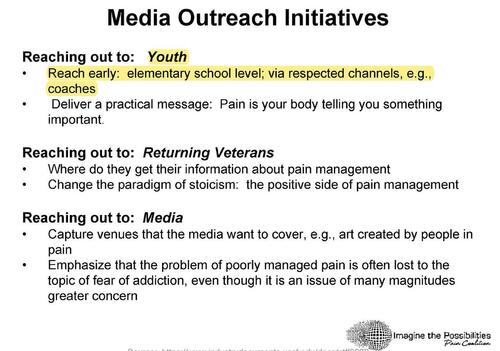 Slide from the group’s 2011 internal presentation. Accessed at the UCSF Opioid Industry Documents Archive.
Slide from the group’s 2011 internal presentation. Accessed at the UCSF Opioid Industry Documents Archive.
Johnson & Johnson also quietly funded the 2013 launch of “Growing Pains”, “a new social networking site for young people with pain”. This effort to market opioids to teenagers aged 13 and up was shut down only as of 2021.
From Oxy to Heroin to Fentanyl to … Buprenorphine?
Today nearly every 10th adult has lost a family member to an opioid. All major candidates for president have tapped into the anger — which, however, they have chosen to direct at Chinese and Mexican cartels.
Florida Governor Ron DeSantis vowed if elected president to send U.S. special forces into Mexico (!) to take out fentanyl labs. Trump as president reportedly talked about shooting missiles into Mexico to destroy said labs. President Joe Biden has pledged to “stop [fentanyl] pills and powder at the border.”
So, the newly agreed-upon villains are foreigners.
Did something change?
Yes and no. It turns out the Opioid Crisis — that catchall term for this 25-year-long blizzard of addiction, overdose and death — has gone through different stages, much like how COVID-19 would cycle through variants, from Delta to Omicron. But while COVID quickly mellowed, the Opioid Crisis has just gotten nastier.
The CDC identifies three waves: First came the prescription wave of the late 1990s and early 2000s, which launched the entire enterprise. Next came the heroin wave, which per the CDC roughly started in 2010, when the prescription-addicted turned to the streets. From about 2013 to today, we have been awash in synthetic opioids like fentanyl (heroin requires farming poppies, but fentanyl is cheaply made in labs).
 Graphic accessed at the CDC. Look at how steeply the death rate is climbing today!
Graphic accessed at the CDC. Look at how steeply the death rate is climbing today!
But wait long enough, and Big Pharma always wins. Amoral, soulless corporations — often the same ones paying out massive settlements — have maneuvered skillfully to reassert control over the addiction market they’ve created. The goal now is to create a fourth and final wave of the Opioid Crisis: the buprenorphine wave. We will start as many people as possible on this ingenious opioid.
Buprenorphine, the main ingredient in brand names such as Suboxone® and Subutex®, is a so-called partial opioid agonist: It latches tightly onto opioid receptors but stimulates them only slightly — just enough for a person with physical addiction to not experience withdrawal. A person on appropriately dosed buprenorphine is not sedated or high, they just “feel normal.” (What’s more, even if they were to inject fentanyl, the opioid receptors are already locked down by the buprenorphine, which blocks other opioids from getting through.)
I can’t argue against expanded use of buprenorphine. The data clearly shows that it prevents death and disability. People really do get control of their lives again. Of course, it is also addictive. So, the plan we confidently propose is to treat opioid addiction with this admittedly ingenious and excellent medication, for a monthly price tag, depending on the formulation, ranging from $196 to $1,136… forever.
What’s not to like?
Big Pharma, Finally Unmasked
Medicine has wrought amazing breakthroughs, and we have professed high moral standards. But some of us aren’t above indulging in the same “Braindead Megaphone”-style pronouncements plaguing the rest of society: sternly shouting down even the meekest questions about pediatric gender reassignment therapies or vaccine mandates, for example. When it comes to the Opioid Crisis — this massive, deadly pandemic of addiction we’ve unleashed — we stroll past whistling and look guiltily away, then whirl back around, whip out the Braindead Megaphone, and loudly announce that we expect to be paid handsomely to provide additional addictive opioids to treat this same pandemic. We declare this with wide-eyed innocence, and get indignant if anyone questions this plan — even as internal corporate communications now available show Big Pharma corporations rubbing their hands gleefully at the thought of all of that buprenorphine cash.
That’s right: internal corporate communications — millions of pages — are now available. They can be searched online at the Opioid Industry Documents Archive, hosted by University of California San Francisco (UCSF).
I thought I knew a lot about the Opioid Crisis. After all, I’d been a reluctant front-line participant in it for 20 years, as a paramedic, a medical student and a physician.
Then the lawsuits arrived, and the Archive opened.
Next: A conspiracy to taint the medical literature
Matt Bivens, M.D.: Full-time ER doctor. Board-certified in emergency and addiction medicine. EMS medical director for 911 services. Former Russia-based foreign correspondent, newspaper editor and Chechnya war correspondent. Reluctant student of nuclear weapons.
Tyler Durden
Wed, 05/08/2024 - 23:15


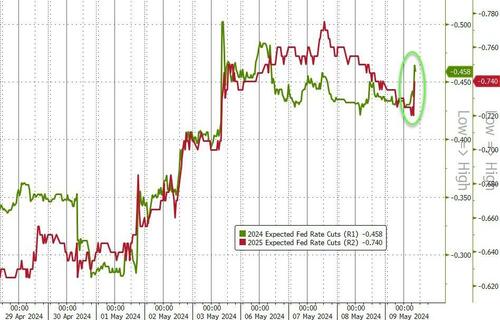

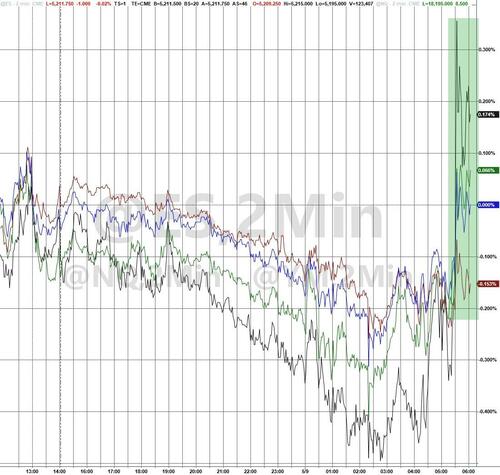
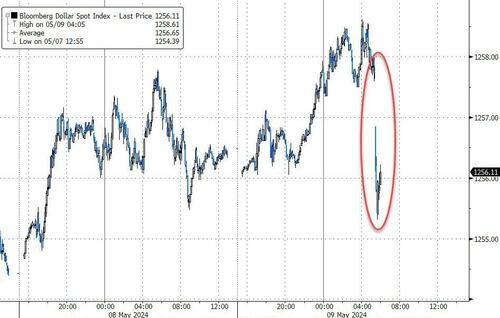
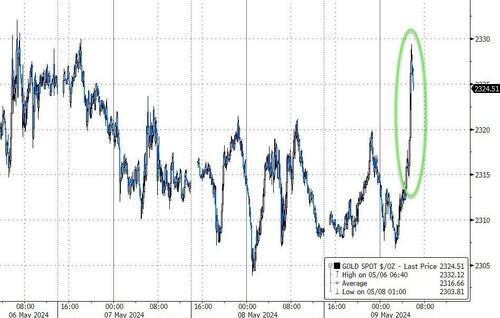




 Walt Nauta, valet to former President Donald Trump and a co-defendant in federal charges filed against Mr. Trump, is seen at the James Lawrence King Federal Justice Building in Miami on July 6, 2023. (Alon Skuy/Getty Images)(Photo by Alon Skuy/Getty Images)
Walt Nauta, valet to former President Donald Trump and a co-defendant in federal charges filed against Mr. Trump, is seen at the James Lawrence King Federal Justice Building in Miami on July 6, 2023. (Alon Skuy/Getty Images)(Photo by Alon Skuy/Getty Images)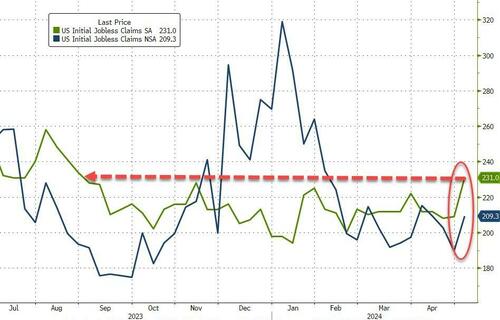
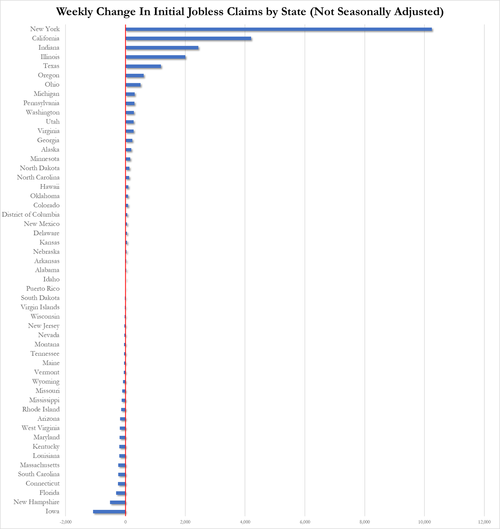
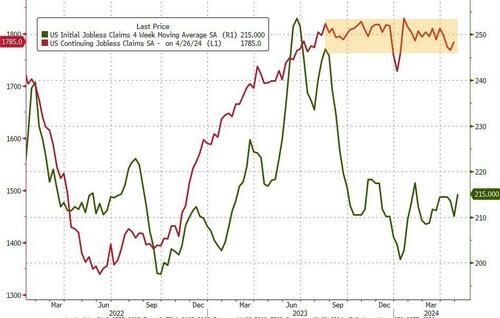


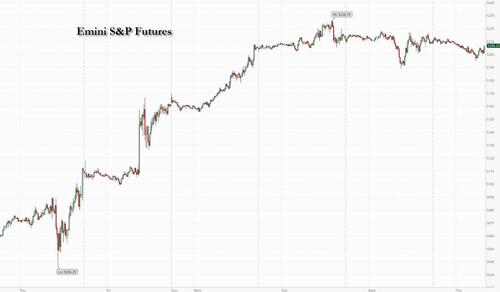


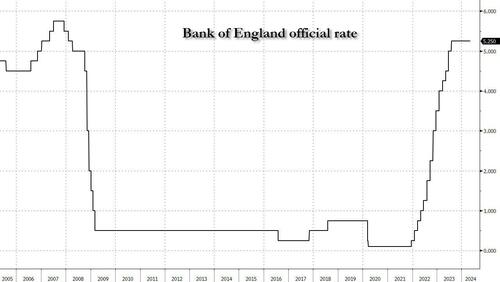

 16 April 2023, Baden-Württemberg, Neckarwestheim: The Neckarwestheim nuclear power plant. The era of commercial power generation with nuclear power plants in Germany came to an end on Saturday with the separation of the Isar 2, Neckarwestheim and Emsland nuclear power plants from the power grid.
16 April 2023, Baden-Württemberg, Neckarwestheim: The Neckarwestheim nuclear power plant. The era of commercial power generation with nuclear power plants in Germany came to an end on Saturday with the separation of the Isar 2, Neckarwestheim and Emsland nuclear power plants from the power grid.


 Via Reuters
Via Reuters






 Vintage ad for a morphine-based child’s medicine. From the DEA’s
Vintage ad for a morphine-based child’s medicine. From the DEA’s 
 From CDC data. Numbers have continued to climb through 2023.
From CDC data. Numbers have continued to climb through 2023.  From page 18, paragraph 56, of the Massachusetts attorney general’s
From page 18, paragraph 56, of the Massachusetts attorney general’s  Slide from the group’s 2011 internal presentation.
Slide from the group’s 2011 internal presentation.  Graphic
Graphic 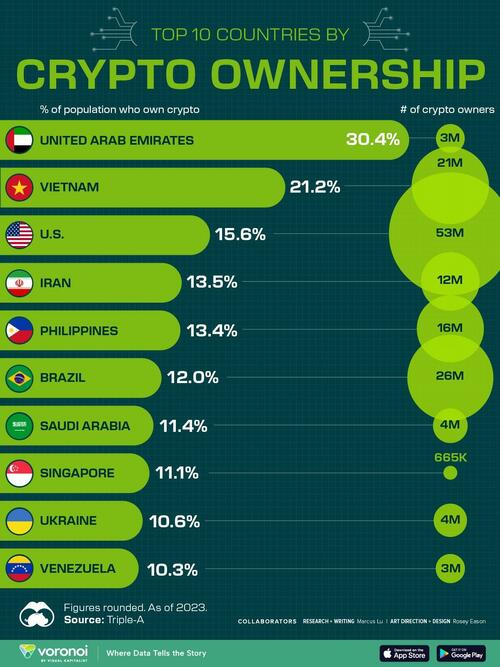
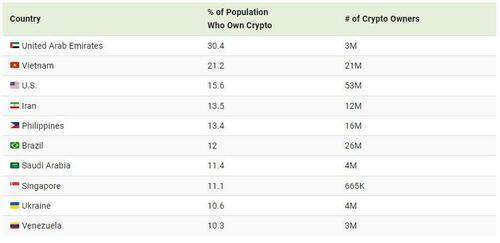

Recent comments